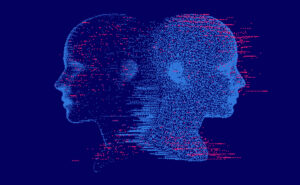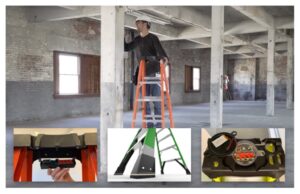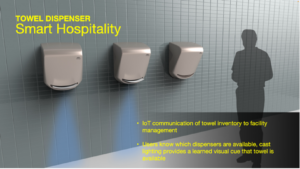“Each person has an identity, a world unto themselves.” -Robert Allan Zimmerman
For generations, business leaders have known that the key to determining future wants and needs lies in the hearts, minds, activities, and surroundings of their customers/ users/ patients and other human stakeholders. Therefore, it has been the constant quest of market researchers to unlock a more unfettered link to the internal desires of the mind. With this type of human-based insight, honing enabling technologies for our tools, devices, and surroundings becomes more focused on real purpose and meaning.
This need for data and insights in all corners of human life is the interest of human behavior analytics that will be embedded into more smart home devices, wearable technology, and even behavior biometrics technology in healthcare. It will enable more objects and surroundings in our lives with remote sensing capability to unlock patterns and connections lying just below everyday recognition.
Predictive Analytics on Human Behavior: Greater Significance for The Things in Our Lives
Television was the first media format with a direct and timely understanding of market content receptivity. As a result, content creators knew what resonated with the audience through viewership ratings.
Fast forward to the early dawn of the internet when you would log onto your AOL(!) account and see curated material laid out like a magazine, though you could only passively view it. Online traffic meant an instant understanding of how well content traveled across the internet in real-time. Web 2.0 lets Us (the everyday public) be content generators with blogs and early forms of social media — more people have become content creators than ever before in human history. Web 3.0, which we are just entering, stands to generate new sectors of content and wealth through the potential individual ownership of expansive digital assets.
This is all significant for the progress of the digital sphere. We may be on a course where the Metaverse realizes a virtual existence that is seamless with the physical; however, there still exists a vast amount of understanding about the material human condition to be gathered. There is still much to be learned and recorded about our off-line and non-digital realities. Our physical bodies, everyday objects, and environments interact without a significant understanding of the human condition and the potential to improve lives. Gathering physical data or user behavior analytics and its interpretation represent a significant unknown and untapped value for improving our lives. But this privileged information will require new heightened security and trust between tech developers and users.

Zero trust architecture will be core to the handshake between us and the future devices in our lives. The data they log, and the process through which applied Artificial Intelligence will show new insights, will require controls on who accesses it and who owns it. Trust architecture encompasses features like deep encryption and security strategies that eliminate trust by using micro-segmentation to prevent data breaches and lateral movement within a network.
IoT Connected Smart Devices Challenge Us
We are all familiar with the day-to-day tracking of our lives through our smart devices. We wrestle with the intrusions on our privacy and how they can compromise our sense of anonymity and personal freedom. But when our smart stuff gets it right, it connects us with better things, more enjoyable experiences, and the greater meaning — saving us the time and trial and error of a completely do-it-yourself approach to finding information or engaging with our surroundings.
 In the best instances, with our smart technology, we are prompted with the better options first; our preferences are met sooner. Our status quo is challenged in the best cases, and we are presented with something outside our comfort zone. As a result, we learn or experience something new and significant to expand consciousness, improve our relationships, care for our bodies, or engage better with our surroundings.
In the best instances, with our smart technology, we are prompted with the better options first; our preferences are met sooner. Our status quo is challenged in the best cases, and we are presented with something outside our comfort zone. As a result, we learn or experience something new and significant to expand consciousness, improve our relationships, care for our bodies, or engage better with our surroundings.
More things are becoming smart in our lives. Cameras exist where doorbells used to be, and we can see who is at the door when we are not even home. Refrigerators can deliver information to our phones about their contents. So, what’s for dinner? There is much more connection to be cooked up… smarts are coming to more and more everyday objects with the intent to understand us better and better meet our needs. New smart/ IoT (Internet of Things) tools are used in the early development of objects and devices to better understand people and their surroundings.
More Benign Things Will Have a Brain with Artificial Intelligence
 This is where IoT-enabled early learning devices come into play. Common objects that did not initially present as needing specialized intelligence will be equipped with unique data logging capabilities. An example of an everyday object becoming a recorder of behavioral data is the PÜL water bottle.
This is where IoT-enabled early learning devices come into play. Common objects that did not initially present as needing specialized intelligence will be equipped with unique data logging capabilities. An example of an everyday object becoming a recorder of behavioral data is the PÜL water bottle.
Sensors are integrated to be in tune with recording specific pieces of data. This data is aggregated for interpretation through software algorithms to derive insights into behavior and environments. In this case, something as essential as water consumption becomes a gateway for large amounts of user data with the potential for significant derivative insights into other aspects of daily life.
These IoT-enabled early learning devices bring a cozier understanding of human behavior with untainted data in its recording. More traditional methods of user research like contextual learning might bring ambiguity of interpretation; others, such as focus groups, might distort the veracity of individual perspectives.
The Goal: User Behavioral Analytics into Digital Twin Technology

Industries needing to manage risk, deliver consistent high-volume output, or ensure repeatability in demanding circumstances have looked to computational models. For decades, these models have helped understand surrounding conditions and forces with greater speed and even predict when issues or failures might occur. For example, the energy sector models the effects of environmental forces on floating systems to understand how these systems and their materials are holding up and when they might break in the future. In doing this, an ongoing database is generated in the form of a digital twin that can be used as a tool to predict outcomes and understand how improvements in the system might impact future longevity and performance.
Digital twins are also of growing interest to better understand the human condition and improve quality of life. Imagine what is you being digitally simulated, from your behavior to your unique biological makeup. Human-based digital twin models having predictive human behavior analytics hold great promise in recording and aggregating all kinds of data. This can be user behavior analytics from our everyday lives or predictive analytics for healthcare purposes.
Imagine talking with your doctor throughout treatment and playing out that course of treatment in a virtual capacity through your medical digital twin. This could deliver higher levels of treatment efficacy, patient adherence, and improved outcomes — not to mention the personal peace of mind and confidence in knowing you are taking the best (virtually) proven path for you.
Enacting and Unlocking Predictive Human Behavior Analytics in The Short Term

Figure 1: Force-4, “Otto” Smart Ladder

Figure 2: Force-4, “Smart Hospitality”, Towel Dispenser
Connected device capability for previously thought common analog types of products is rising. This is all in the interest of recording and harnessing new insights into human behavior and biology. This process starts earlier in device development with minimum viable product prototypes with predictive human behavior analytics. In this approach, early functional versions log data streams to understand human behavior; combined with machine learning and applied Ai, these data streams are deciphered into new user insights that enable ways to meet user needs better. Prototypes build progress more effectively, utilizing this data to improve understanding of human-centered needs and ultimately enhance the product or device itself.
The following are several key questions that will decide the significance of advanced predictive behavioral analytics:
- What new benefits will this bring to consumers and users of these product devices?
- What is the role of empathy, access, and ownership in the human-based information that is gained?
These will be some of the topics in our ongoing series around human-centered design and enabling new computational methods that are empathetic for humans rather than just enabling technology.
AUTHORS

- Jason Phillips, Group Creative Director, has more than 20 years of innovation and product development experience in consumer-packaged goods, durable products, human performance applications, and technology integration.
Ref: B004-HB-The Accelerated Quest to Gather Human Centered Data
Keep in touch with us.
Sign up for our newsletter.
